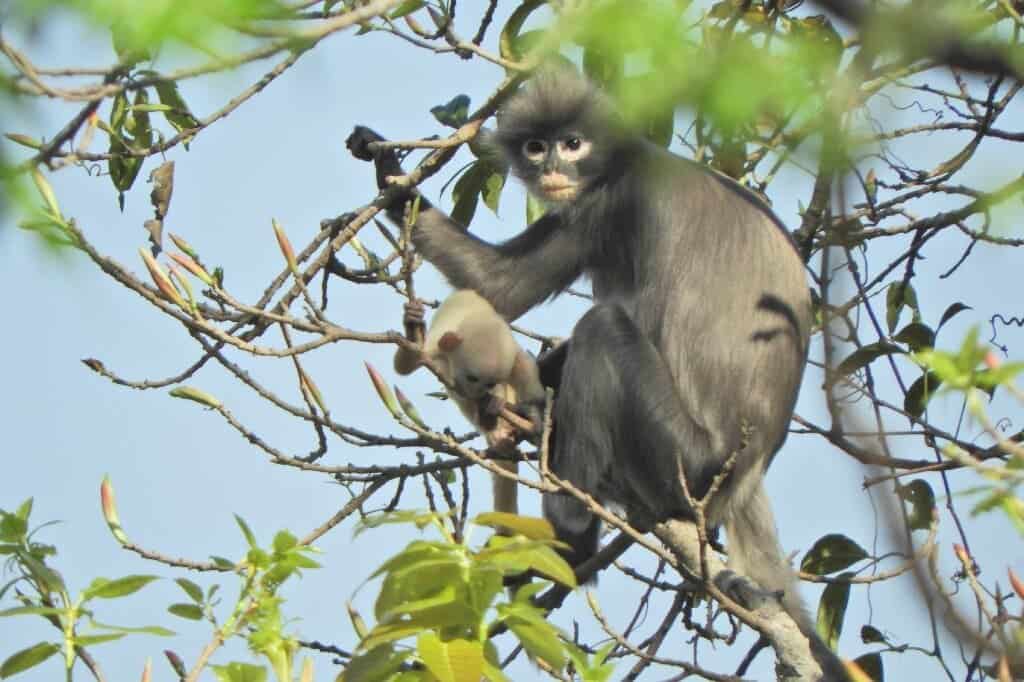A new species of primate has been discovered in the forests of central Myanmar. The diminutive animal is a leaf-eating tree-dweller with a distinctive mask-like face framed by unruly grey hair. However, it’s probably already on the brink of extinction.

Christened as the Popa langur after an extinct volcano where the largest known group of these monkeys live (around 100 individuals), the species has likely existed for at least a million years, the study reports. But estimates place the species’ living population at somewhere between 200 and 250 individuals, so the researchers are calling for it to be classified as “critically endangered”.
Small and rare
“Just described, the Popa langur is already facing extinction,” said senior author Frank Momberg, a researcher at Fauna & Flora International (FFI), in Yangon.
The species is feeling extreme pressure from “hunting, habitat loss, degradation, fragmentation caused by agricultural encroachment, and illegal or unsustainable timber extraction” throughout all of its natural range, the study found, which helps explain how its numbers got so low.
The species was first discovered in the backrooms of the London Natural History Museum. Genetic analysis of specimens gathered in British Burma more than a century ago revealed that some specimens belonged to a new species. Feces samples recovered by Momberg and his colleagues in the forests of central Myanmar matched those specimens, showing that the mysterious langurs were still alive and kicking.
Finally, in 2018, the team managed to capture one such langur on camera, revealing their distinctive look. Trachypithecus popa, or T. popa for short, has a grey-brownish and white belly, with black hands and wrists. Its tail stands nearly a meter long, and the whole animal weighs around 8 kilograms (18 pounds) — around twice the weight of your typical house cat.
“Additional field surveys and protection measures are urgently required and will be conducted by FFI and others to save the langurs from extinction,” said Ngwe Lwin, a primatologist with FFI’s Myanmar program.
The team also carried out a genetic analysis, based on mitochondrial genomes of 41 specimens, to get a broader picture of the evolutionary history of the langur family. They found that the four distinct groups that make up this family (all are currently endemic to Asia) diverged from a common ancestor some four million years ago. T. popa has been a distinct species for at least one million years, they add.
Several of the 20 known langur species worldwide are critically endangered. Hopefully, research such as this one can lead to them not disappearing.
The paper “Mitogenomic phylogeny of the Asian colobine genus Trachypithecus with special focus on Trachypithecus phayrei (Blyth, 1847) and description of a new species” has been published in the journal Zoological Research.


